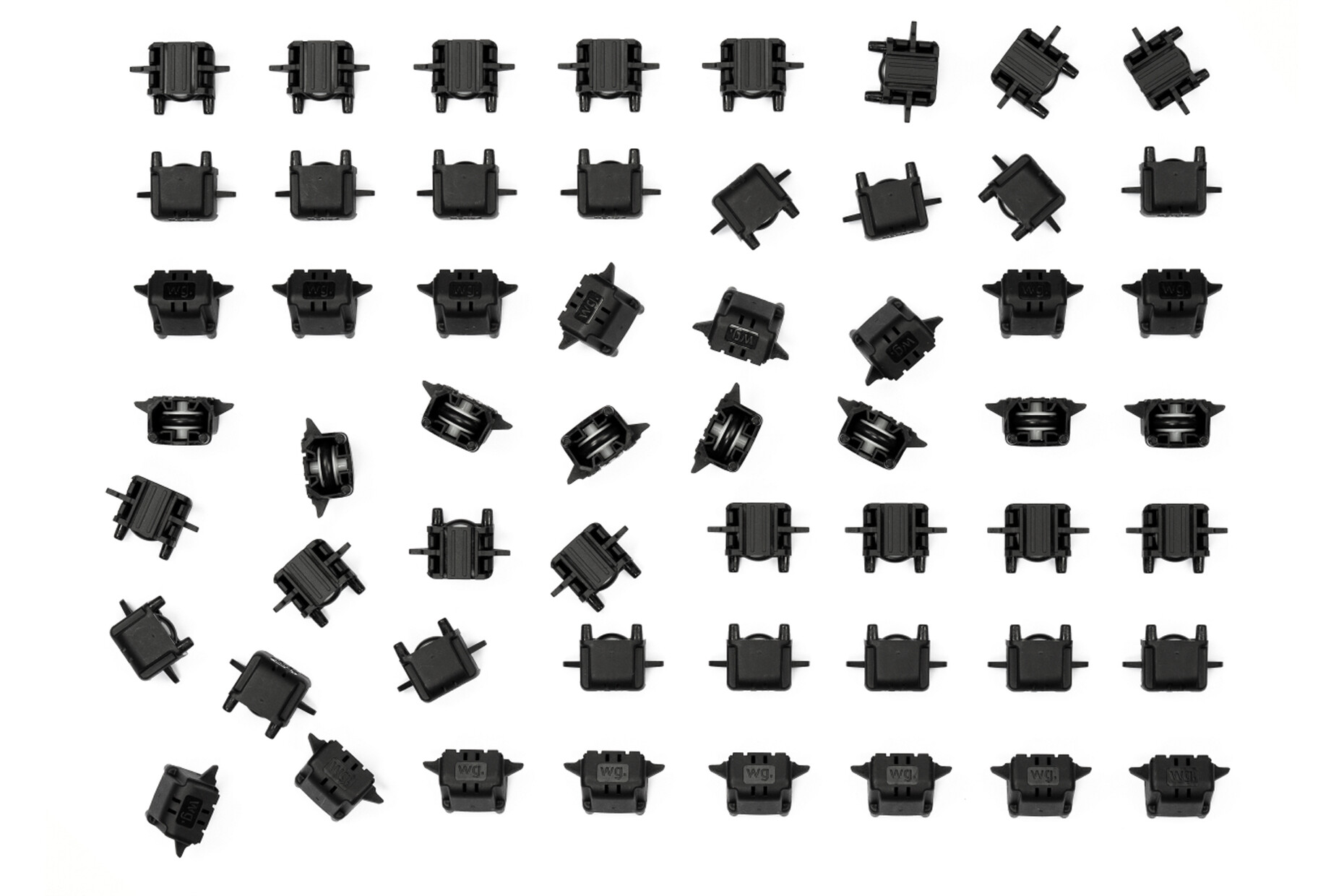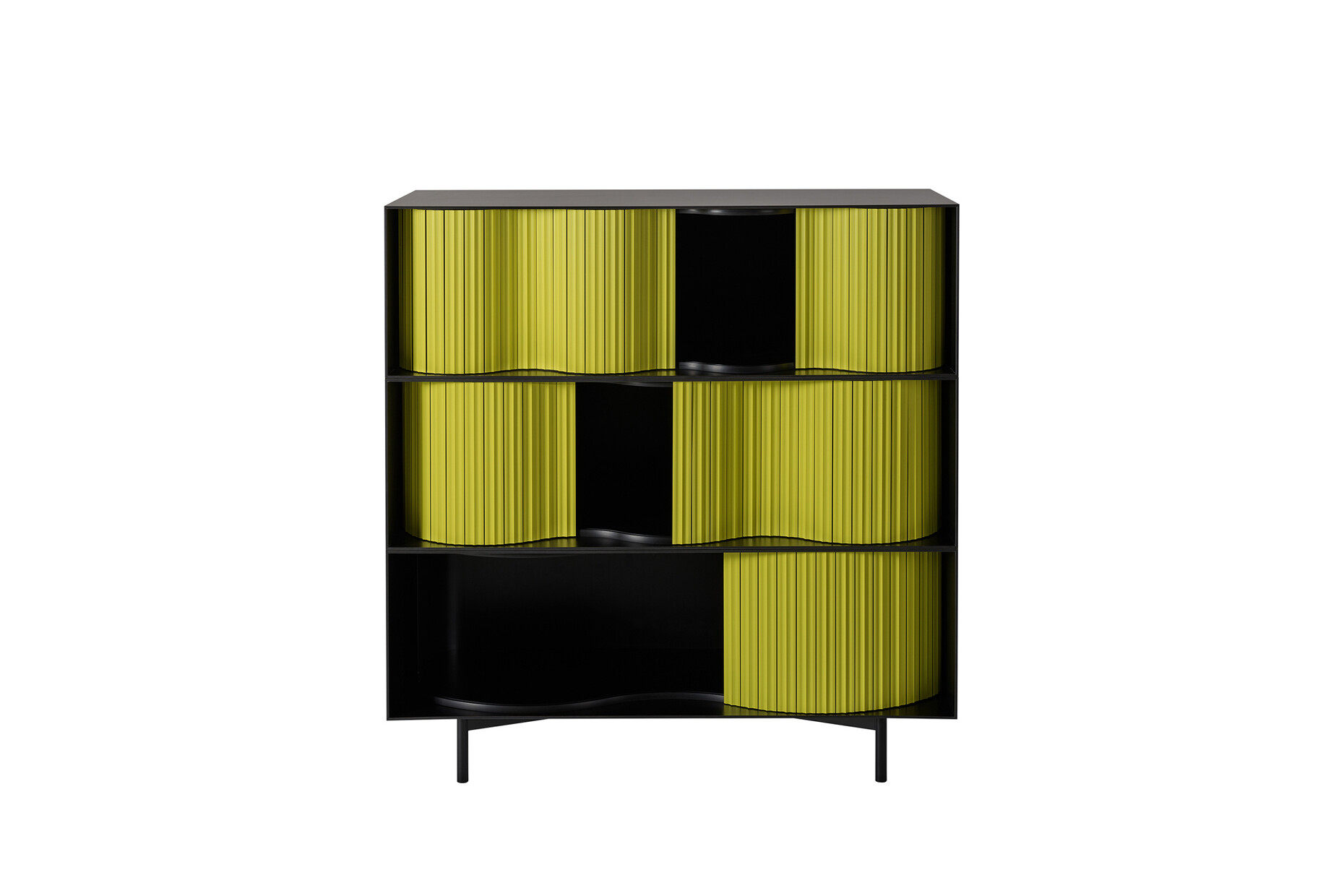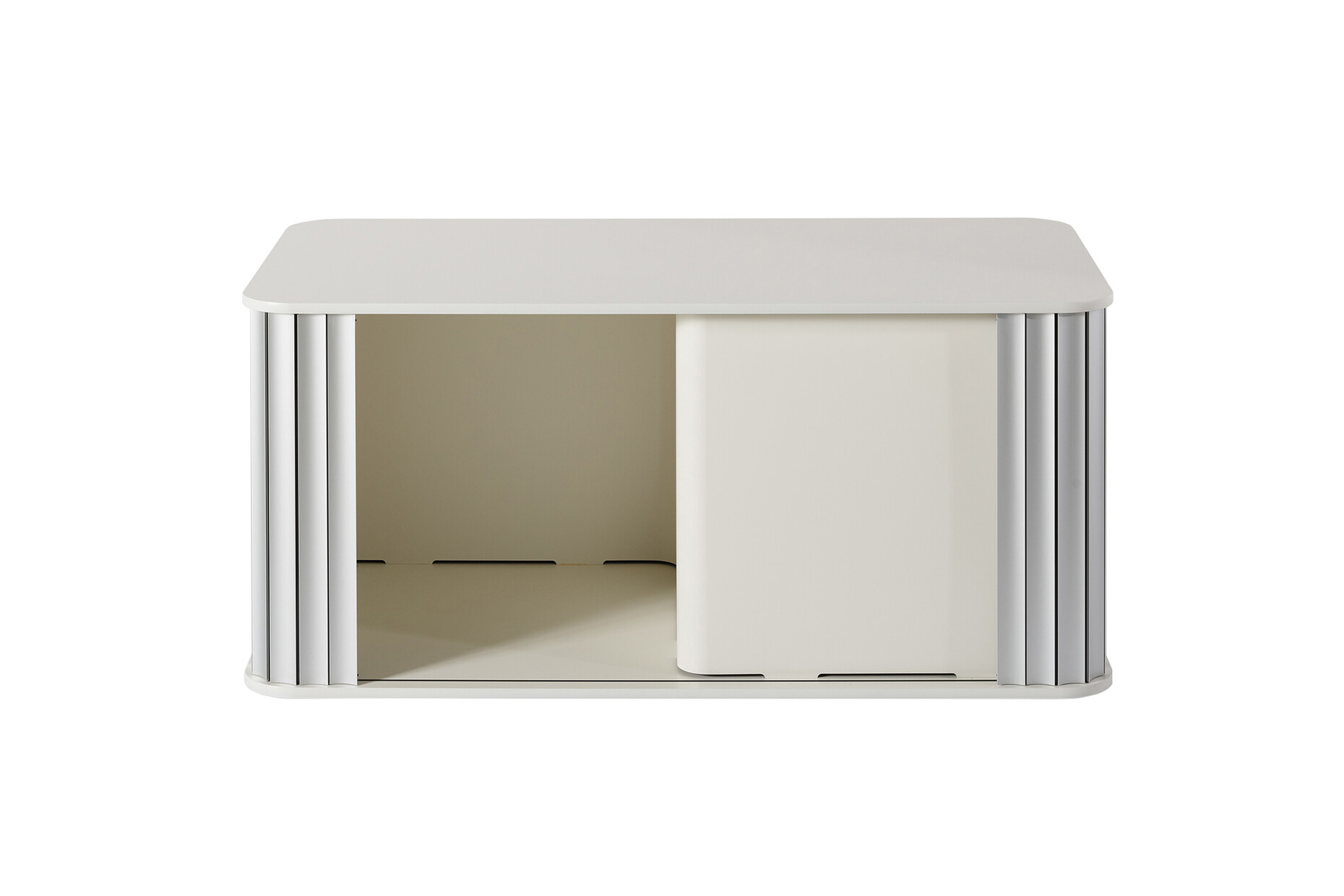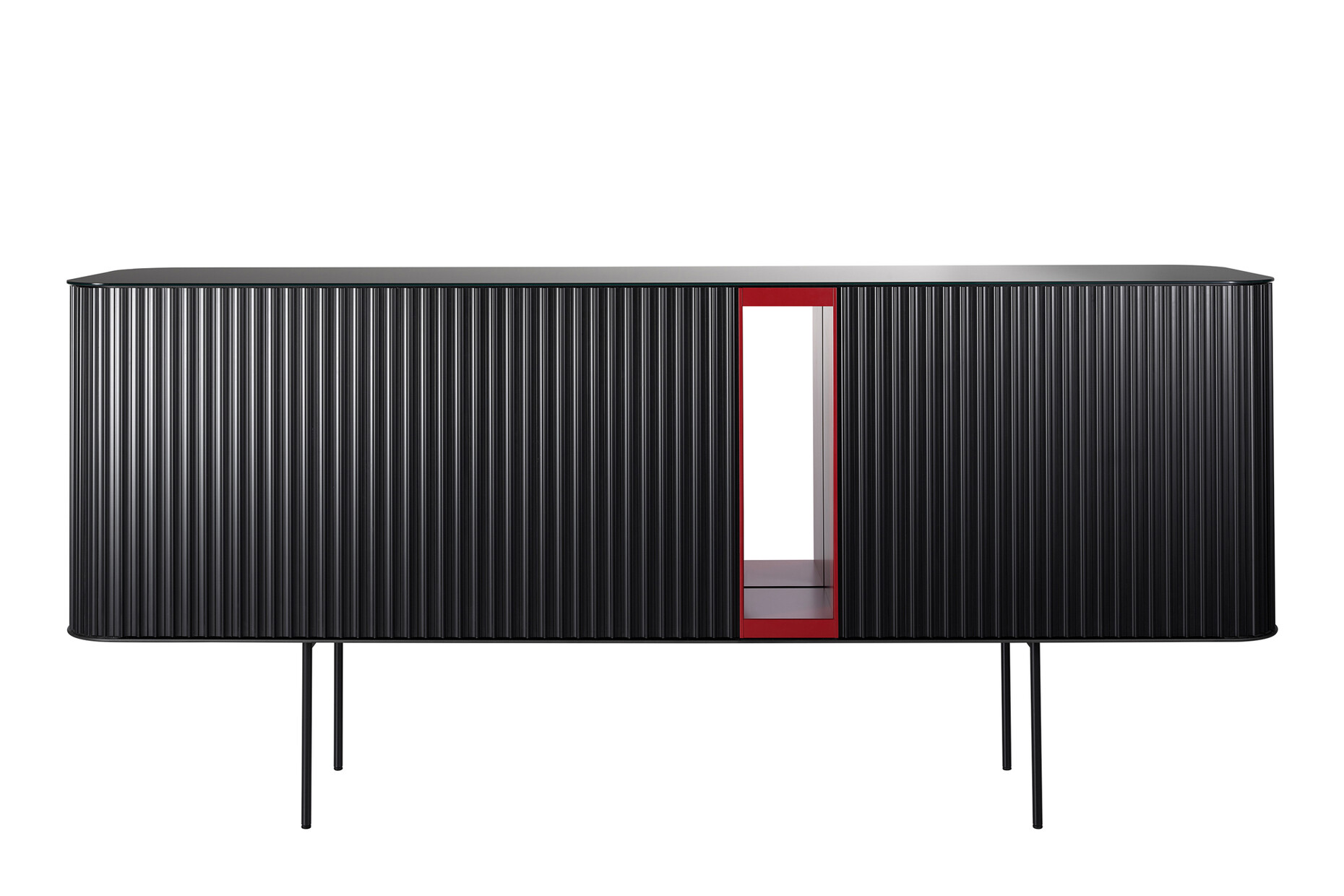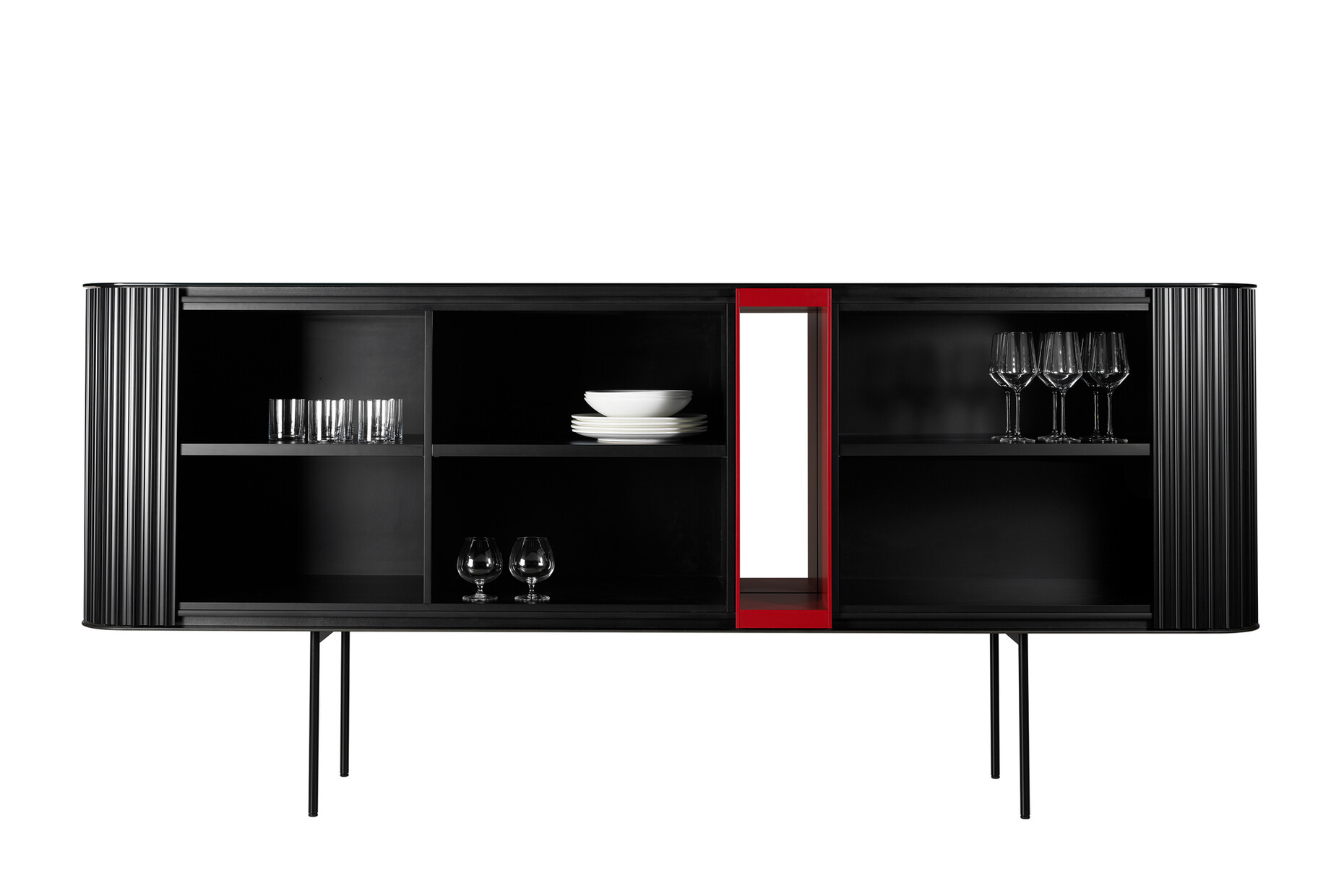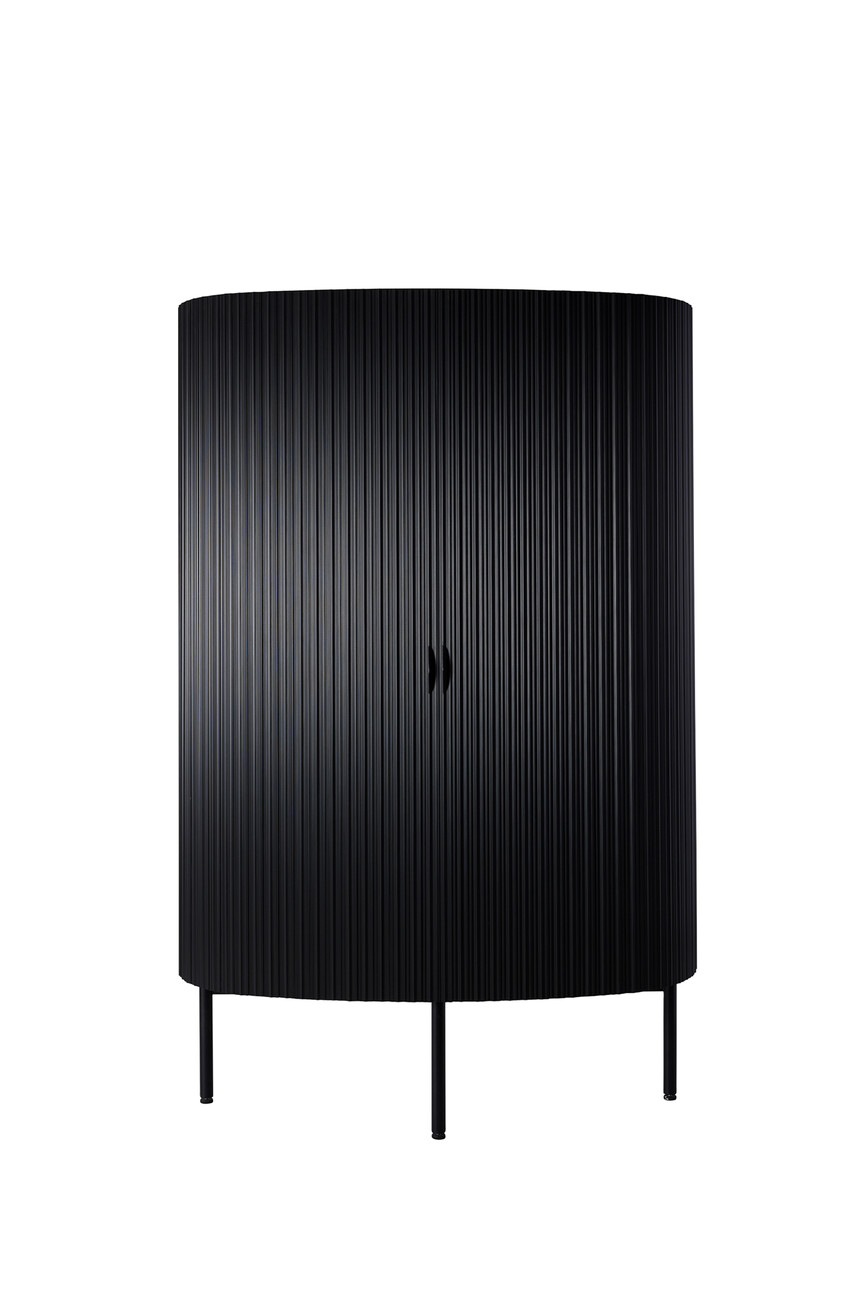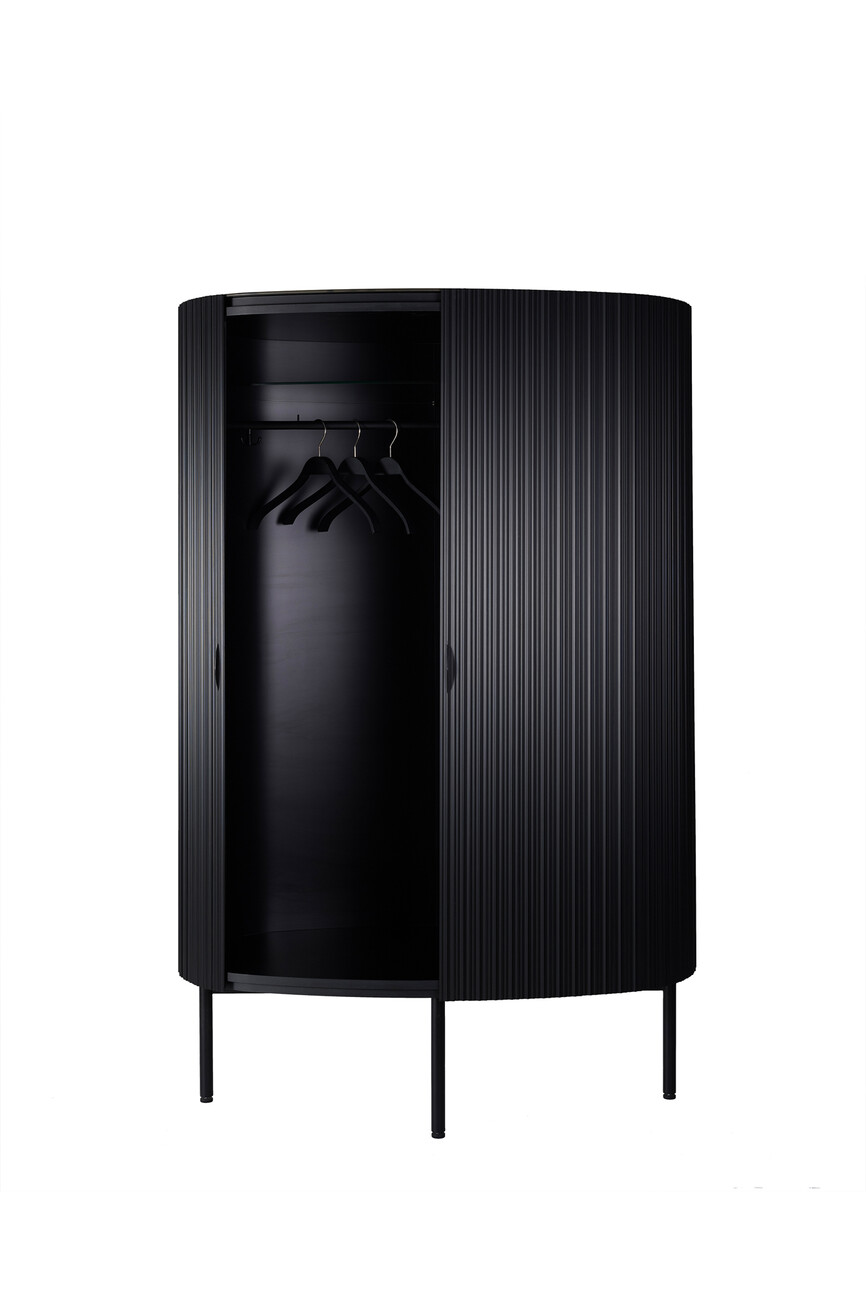Craftsmanship meets hi-tech
Swiss precision work is absolutely proverbial. That also goes for the furniture industry where numerous companies stand out not only for their successful design but also for the art of “Swiss engineering”. A prime example of this is Wogg, based in Baden Dättwil, with its collection of simple yet sophisticated furniture products. Among other things, the firm (founded in 1983) relies on new manufacturing methods whereby materials such as aluminum, synthetic materials, HPL, wood and various textiles are used in pioneering ways. Simultaneously, Wogg works both with experienced architects, designer, engineers and carpenters but equally with young creative talents so as to constantly expand its own portfolio.
A recent addition is “Wogg 75”, a cabinet with a roll-up front comprising a guiding element as a gliding mechanism and notched aluminum profiles. Thanks to their ingenious shape and the combination with synthetic profiles, the front can negotiate both concave and convex, narrow and wide radiuses. The small synthetic profiles that enclose a soft rubber tire can be clipped into any one of the notches in the composite panel. The guiding element and aluminum profile act as a single unit, which enables the front to be operated smoothly and silently. The design was most recently also awarded the Innovationspreis Architektur + Office 2020 and praised for “its highly successful reinterpretation of the roller-blind cupboard”.
The new system was developed by designer and inventor Willi Glaeser over a period of 13 months in collaboration with various engineers and material specialists. Talking about “Wogg 75”, the company’s Creative Director Christophe Marchand says "with this ingenious modular system there are hardly any limits to its use in design and architecture.” And to prove its point the company had the products Wogg 76 to 79 crafted by several renowned design studios, namely Uchida Design Inc. from Tokyo, Julienrenaultobjects from Brussels, Buratti Architetti from Milan and Christophe Marchand Design from Zurich. Uchida Design Inc. was inspired in creating “Wogg 76” by the delicate character of the “Wogg Caro” furniture line: The result is a container with an integrated roll front, which can completely disappear into the former’s body. The designers experimented with the possibilities offered by the flat, finely grooved aluminum profile and the various radiuses in the lines, which when combined produce an organic interplay of movement, color and shadow.
In conceiving the coffee table “Wogg 77” Belgian designer Julien Renault drew his inspiration from the shape of the Dorian column. Consequently, the aluminum profile is convex while the table has the overall appearance of an inert monolith. The roll front serves here merely as a shell as the table’s actual support structure is concealed inside it. By contrast, Buratti Architetti created the sideboard "Wogg 78” as an asymmetrically arranged open box which acts as the body of the roll front. Since the aluminum profile is more strongly curved here this creates several grip options on the front’s surface. Simultaneously, this highly curved design lends the furniture a very individual character. This is further reinforced by the dark color of the roll front, the burgundy red of the body and a glass panel for the top which give the sideboard a classy look. “Wogg 79” is a wardrobe designed by Christophe Marchand Design. Inside three supports form the bearing structure of the elliptical furniture. It stands on delicate feet and opens in the middle. In the center there is a rail and there are additional hooks on the curving corners which offer enough options for clothes storage. Wogg remains true to its DNA and once again launches furniture that stands out for its design, typology and appearance.

